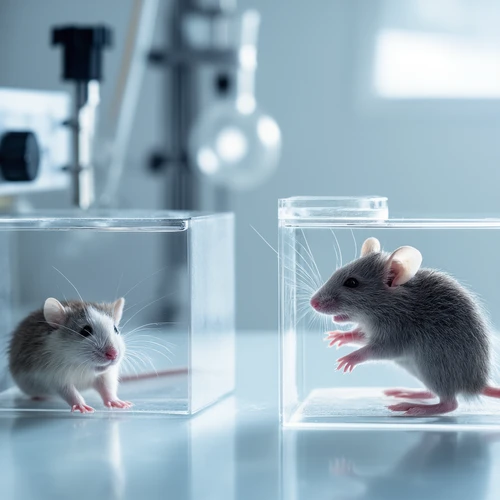Scientists from the Broad Institute and Mass General Brigham have discovered that a low-oxygen environment, similar to that found at high altitudes like Mount Everest’s base camp, can protect brain cells and restore movement in mice with symptoms resembling Parkinson's disease.
The research published in Nature Neuroscience, suggests that cellular malfunction in Parkinson's leads to an accumulation of excessive oxygen molecules in the brain, which then contribute to neurodegenerative processes—and reducing oxygen intake could potentially prevent or even reverse Parkinson's symptoms.
Nature NeuroscienceThe co-senior author Vamsi Mootha, a member of Broad Institute and professor at Harvard Medical School, said: "The finding that neurological damage can be reversed is very exciting. It indicates there’s a window where neurons are dysfunctional but not yet dead, and we can restore their function if we intervene early enough."
"Our findings open up a completely new perspective for addressing Parkinson's disease," added co-senior author Fumito Ichinose, professor of anesthesia at Harvard Medical School.
The researchers caution that it is too soon to directly apply these results to human treatments. Unsupervised breathing of low-oxygen air can be dangerous and may exacerbate the condition. However, they are optimistic that their findings could pave the way for developing new drugs that mimic low oxygen effects.
This study builds on a decade of research led by Mootha into hypoxia—the condition of having lower than normal oxygen levels—and its surprising protective effect against mitochondrial disorders.
"We first found that low oxygen improves brain-related symptoms in some rare diseases like Leigh syndrome and Friedreich’s ataxia," said Mootha, who leads the Friedreich’s Ataxia Accelerator project. "This led us to question if the same could be true for more common neurodegenerative diseases such as Parkinson's."
Parkinson's disease affects over 10 million people worldwide, leading to progressive neuron loss and causing tremors and slowed movements.
The study used a mouse model where mice were injected with α-synuclein protein clumps that form Lewy bodies. They found that mice kept in low-oxygen conditions (11% oxygen) didn’t lose neurons or show movement problems despite forming Lewy bodies, whereas those with normal air showed severe symptoms.
Introducing hypoxia even after symptom onset still resulted in the recovery of motor skills and decreased anxiety-like behaviors in the mice. This suggests that low oxygen could potentially treat Parkinson's without directly targeting α-synuclein or Lewy bodies.
The excess oxygen in brain cells, likely from mitochondrial dysfunction, appears to be toxic. Reducing overall oxygen supply seems to cut off the damage mechanism.
More work is needed before translating these findings into treatments for humans. Mootha’s team is developing “hypoxia in a pill” drugs that mimic low-oxygen effects on mitochondria with potential applications for neurodegeneration.
While not all neurodegenerative conditions respond to hypoxia, the approach has shown promise across multiple models including Leigh syndrome, Friedreich's ataxia, and accelerated aging.


